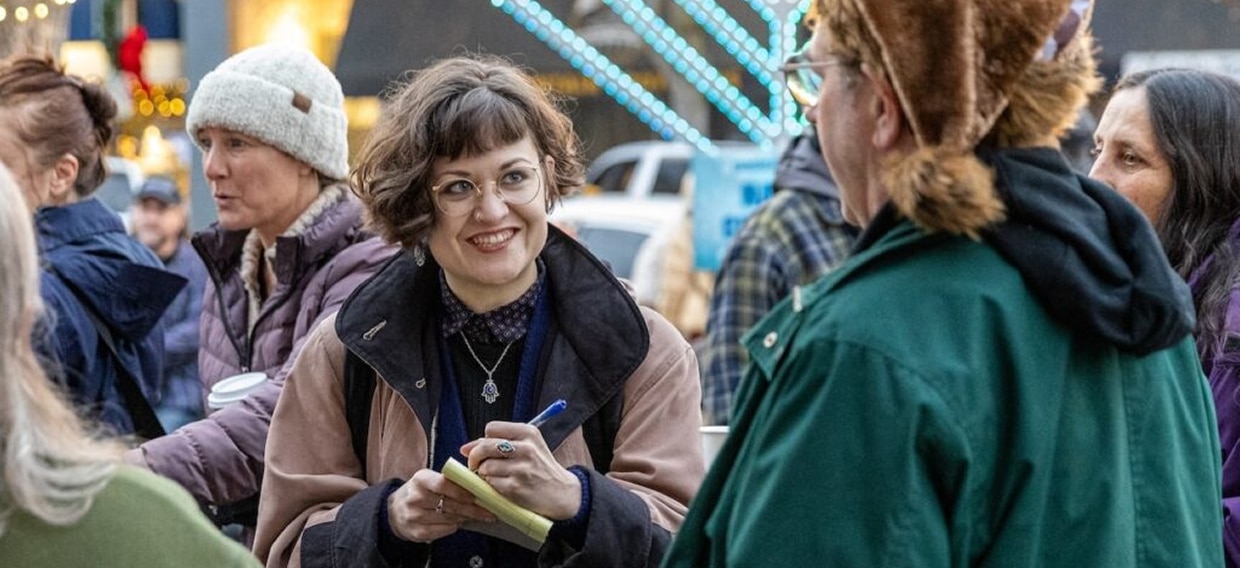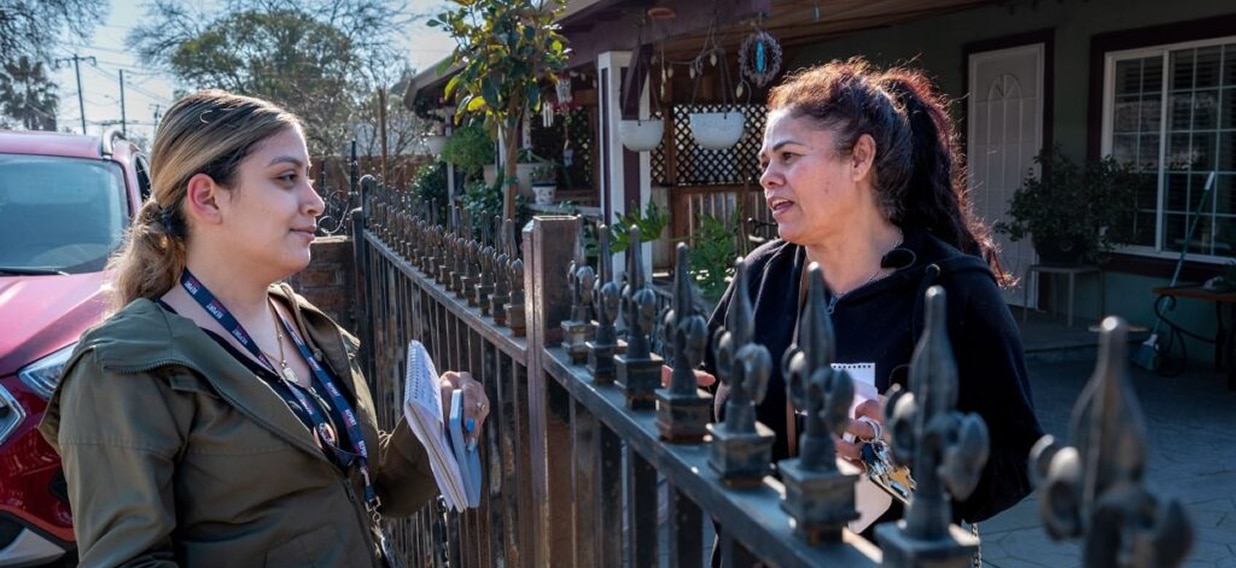
For “journalist turned lawyer turned journalist” Ashton Lattimore, serving the LGBTQ community is critical to fulfilling her newsroom’s mission.
“Our mission is first and foremost to reflect the lived experience of the people most impacted by injustice,” said Lattimore, editor-in-chief at Prism, an independent, nonprofit news outlet led by women and gender nonbinary/nonconforming journalists of color. “That means Black Indigenous people of color, that means people in the LGBTQ community.”
Prism reporters file from their hometowns in cities across the U.S.
Lattimore, who lives with her husband and children outside Philadelphia, has been with Prism since its soft launch in 2019. She is a Harvard grad, the former editor of the Harvard Law Review and a cisgender, straight Black woman. She is also a novelist and one of three newsroom leaders who spoke with INNsights about their efforts to both serve and in some cases activate queer communities. All three lead organizations which are members of the Institute for Nonprofit News, a network of more than 400 independent news outlets.
“One impact that we’ve had is creating space for a more intersectional conversation, specifically around reproductive rights,” Lattimore said, referring to the decision by the U.S. Supreme Court that overturned Roe v. Wade. “We’ve focused on not just abortion, but abortion as it affects people in the trans community, as it affects other folks,” such as nonbinary individuals as well as both straight and lesbian cisgender women.
“The idea is for us to use journalism to disrupt some of the really toxic and frankly, inaccurate narratives that are out there about our communities, and also to really uncover the injustices that are happening, and lift up the truth of what’s happening,” she told INNsights.
Reporting from and for the community
Like Lattimore, Sunnivie Brydum is 35. She is the editorial director of Yes! Magazine as well as an award-winning investigative journalist. Brydum echoed Lattimore’s comments that to best serve the queer community, a news organization does not have to be LGBTQ-centric, just inclusive.
“Yes! has always believed that LGBTQ people are part of the solution,” said Brydum, who is white, queer, cisgender, married to a transgender man and is also a mom. “Solutions will emerge from the LGBTQ community as well as every other historically marginalized and historically excluded community, including Black folks, including brown folks, immigrants, and so many folks. So Yes! has always embraced a broadly intersectional approach, and we have been working to make that intersectional approach more explicit in our coverage.”
“We’ve been letting straight white men report on the president forever. And that has never been a conflict of interest.” — Sunnivie Brydum
Both Brydum and Lattimore said they have found success in utilizing members of the community to report on the issues that impact them.
“I think it changes the conversation that our staff members, our reporters, are able to have with people, because they’re not necessarily reporting across lines of difference in quite the same way,” Lattimore said. “So I think there’s a level of trust that comes with people talking to reporters who come from their own communities and have an assumed baseline of understanding to some extent.”
Brydum, who is based in Seattle, dismisses the notion that these kinds of assignments might present a conflict of interest.
“We don’t see that as a conflict of interest because, frankly, we’ve been letting straight white men report on the president forever. And that has never been a conflict of interest,” she said. “Folks from dominant communities, white folks, cis folks, straight folks, are offered those opportunities all the time. So, that is part of our goal and part of where we are headed.”
Under Brydum’s leadership these past three years, she has made sure Yes! hired trans journalists to cover trans issues.
“It’s not that only trans people can write about trans issues,” she said. “But in my experience, including working at LGBTQ outlets and non-LGBTQ outlets, folks who have lived experience in the topic area on which they are reporting tend to understand more nuance. They tend to, frankly, just get better sources, share stories in a way that simply wouldn’t be accessible to someone who wasn’t part of that community, or would require a lot more work for that individual to be able to access that community.”
Igniting action and celebrating contributions
Community is never far from the mind of Dr. Ken Schneck, who has been editor of The Buckeye Flame since its founding two years ago this month.
“We stand as Ohio’s only LGBTQ news platform,” Schneck, 45, told INNsights. He’s white, cisgender, gay and calls Cleveland home. Schneck is also a tenured professor of education at Baldwin Wallace University and serves as the director of the Leadership in Higher Education program, where he teaches courses on student development theory; race, class and gender in higher education; college leadership; and the intersection of public policy and higher education.
“There is no shortage of other Ohio-based, for-profit newsrooms that cover LGBTQ issues,” said Schneck. “But what we’re able to do as a nonprofit solely dedicated to Ohio LGBTQ voices and issues, is cover these issues with a degree of depth and education and sensitivity and training than newsrooms who don’t have an LGBTQ beat. That’s because none of them do.”
As a nonpartisan, independent nonprofit dedicated to covering Ohio’s LGBTQ population, The Buckeye Flame benefits by having a loyal readership that provides tips and leads, and doesn’t need to be informed about what’s at stake.
“We don’t need to spend half a page explaining, ‘What ‘coming out’ means,’ or explaining, ‘This is what ‘transgender’ means.’” Schneck said. ”I think the biggest differences for us as a nonprofit is that we do have a specific mission of activating and igniting LGBTQ Ohio and our allies. And so, at the end of almost every piece, we will always have a couple of bullets that say ‘Ignite Action,’ which means that if this piece activated you, which we hope that it did, here’s what you do with that energy next, to make a difference.”
Given the swath of anti-LGBTQ sentiment across parts of the U.S., from statehouses to sports and threats against Pride events, Schneck said there is one, most important thing he and his one writer at The Buckeye Flame do.
“To make sure that we are highlighting as many celebratory LGBTQ contributions to Ohio society, as we are these bills that are attacking us,” he said. “And not just be this state of, ‘Oh, look what just happened again.’ But also, ‘Hey! There’s an individual using their voice to make a difference!’ Because we want to inspire as much by role modeling as we do by protest.”





